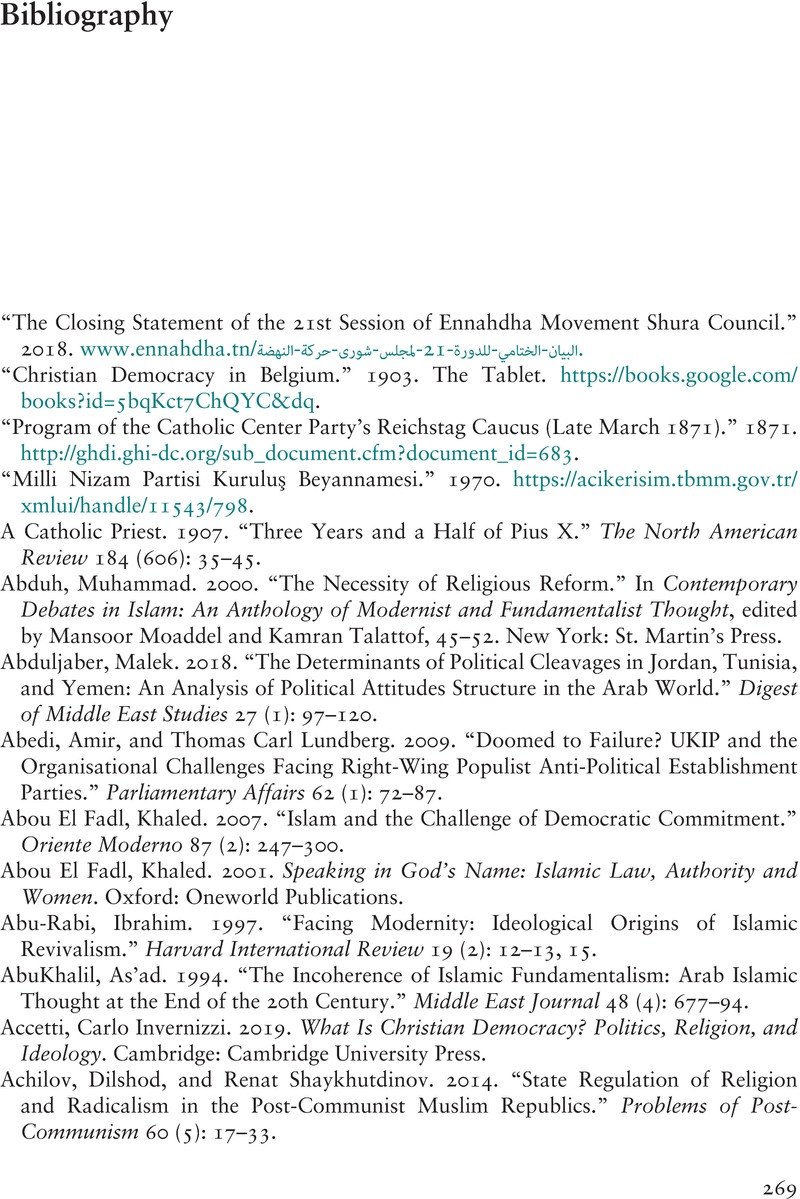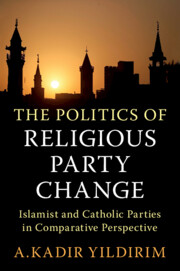Book contents
- The Politics of Religious Party Change
- Cambridge Studies in Social Theory, Religion, and Politics
- The Politics of Religious Party Change
- Copyright page
- Contents
- List of Figures
- List of Tables
- Acknowledgments
- Introduction
- 1 Explaining Religious Party Change
- 2 Catholic and Islamic Religious Institutions
- 3 Anticlericalism, Religious Revival, and the Rise of Religious Political Identities
- 4 The Origins of Religiopolitical Identity
- 5 Intraparty Conflict
- Conclusion
- Bibliography
- List of Interviews
- Index
- References
Bibliography
Published online by Cambridge University Press: 22 December 2022
- The Politics of Religious Party Change
- Cambridge Studies in Social Theory, Religion, and Politics
- The Politics of Religious Party Change
- Copyright page
- Contents
- List of Figures
- List of Tables
- Acknowledgments
- Introduction
- 1 Explaining Religious Party Change
- 2 Catholic and Islamic Religious Institutions
- 3 Anticlericalism, Religious Revival, and the Rise of Religious Political Identities
- 4 The Origins of Religiopolitical Identity
- 5 Intraparty Conflict
- Conclusion
- Bibliography
- List of Interviews
- Index
- References
Summary

- Type
- Chapter
- Information
- The Politics of Religious Party ChangeIslamist and Catholic Parties in Comparative Perspective, pp. 269 - 296Publisher: Cambridge University PressPrint publication year: 2023



